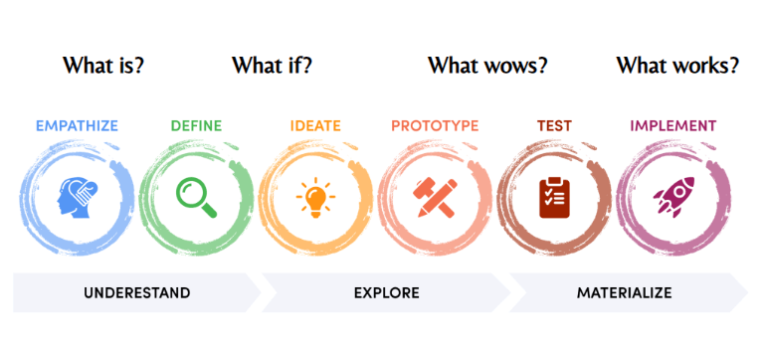
In today’s fast-paced world, we often find ourselves seeking innovative solutions and fresh perspectives to overcome challenges. While design thinking is commonly associated with problem-solving in business and work contexts, its principles can be equally powerful when applied to our personal lives. Who says we can’t use these tricks outside of work?
In this article, we explore how three ideation techniques from design thinking can help you foster creativity and find new pathways to enhance your life.
This weekend I experimented and treated my life as a business unit and myself as a client.

Before starting the Ideation stage, we need to identify the REAL problem we want to focus on. This stage is called “Empathize”.
These are some of the questions to ask yourself to define the area for “innovation”:
- How old are you? What’s your origin? What’s your family status? What’s your role at work?
- What is one thing you do most often/daily?
- What is one thing you find particularly difficult in doing it/in your daily routine?
- What is one thing you wish to change in your life/daily routine?
- If solved, would it make a significant change in your life?
The last one will help you see where do you really need a change in order to make a breakthrough in your life.
Now, that is you’ve identified the real challenge, you want to solve, time to brainstorm a creative solution – Ideation.
1.Reverse Brainstorming.
My students especially love this technique. It’s fun and super easy to come up with insghts and creative idea.
Simple take your challenge statement and ask yourself:
- How can we make even more challenging/worse?
- How can we make the experience more frustrating?
2. Provocation.
Provocation is a technique that encourages us to push the boundaries of our thinking. By challenging assumptions and asking yourself: “What if {challenge statement} would be {contradictory statement}?
For example: “It’s so hard to workout consistently!”
“What if it would be hard to workout inconsistently?”
or “What if it would be super easy to workout consistently?”
Then list all of the ideas how it would look like.
Another way to create a provocation is to combine your challenge statement with a random word association from the point 3.
3. Random word association.
Word association is a powerful tool for generating unexpected connections and insights. Choose a random word or object and explore its attributes, functions, or characteristics. Then, relate them to your specific challenge.
For example, consider the word “watermelon.”
What qualities does it possess that could inspire ideas to overcome your obstacles?
Perhaps its refreshing smell could encourage you to be active, or its vibrant colors could inspire you to add into your life.
Allow your mind to make imaginative connections, and you may find unique solutions or perspectives that invigorate your journey.
Embracing Life’s Process:
I realized that in our pursuit of perfection, while our instinct might be to fix and solve everything ASAP, we often forget that life is a continuous process.
It’s important to hold onto inner peace and joy, even during challenging times. Even for a few seconds. Rather than focusing solely on fixing or solving problems, ask yourself what would make your journey enjoyable?
You can have a challenge AND be happy at the same time.
No matter the circumstances, make a conscious effort to hold onto inner peace and joy, even if just for a few seconds.
Accept that life is not about reaching a destination but finding fulfillment in the present moment.
Like a long flight: no matter how hard you try, if the flight takes 10 hours, it will take 10 hours.
Shift your focus on things you can do to make your trip interesting and fun.